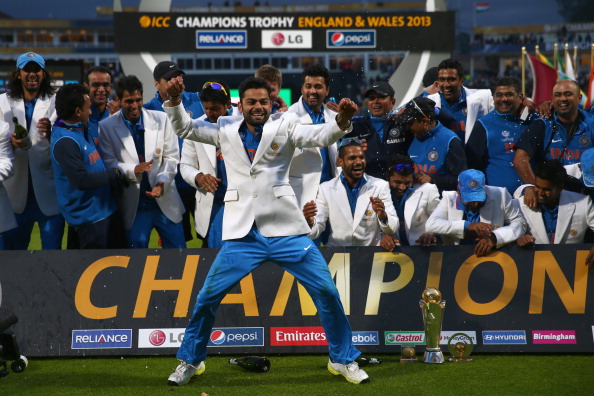Why the existence of one-day format is very important for the sport

The recently concluded ICC Champions Trophy in which Pakistan upset India to win the Trophy at The Oval could be the last edition of the tournament if a series of proposed changes are ratified at the ongoing Annual General Meeting of the International Cricket Council in London.
One of the important proposals that is due to be discussed at the meeting of the chief executives is the scrapping of the Champions Trophy in order to be able to hold the World Twenty20 every two years. While the T20 cricket has been an interesting idea for taking cricket to a bigger audience, this expected move may prove to be a big setback for world cricket.
Cricket the sport, by nature, has always been subtle, nuanced, and leisurely. While Test cricket has kept the standard high demanding large amounts of endurance and patience from the players, one-day cricket teaches calculated aggression. T20 cricket, the youngest entrant in the block, brings instant fun for the fans. But this conventional wisdom is being challenged now as the constant endorsement of the T20 cricket, a format without a pause and that relies on out-and-out entertainment, pushes the 50-over format to a corner.
T20 cricket is generally unforgiving by nature and there is very little room to measure a cricketer’s brilliance. It is generally more tilted towards batsmen and truth be told, a bowler doesn’t have more incentive as he bowls only 24 balls in a match. In this day and age, of heavy willow and flat decks, they get smashed all around the ground and unless a bowler is capable of constantly adding various new tools to his arsenal, he will be lost in the oblivion. There is a clear gulf between bat and ball in T20 cricket and therein lays the importance of One-day cricket, to survive where a bowler gets a chance to make-up for a bad spell or two.
Earlier, when the Indian audiences favoured ODI cricket the most, India were constantly playing tri-nation and multi-nation series in different parts of the world, including Singapore, Canada, and even Malaysia starting from the early 90s. I vividly remember, not long ago, in 2013, many an Indian cricket fan were glued to their Television sets at the midnight to see a certain MS Dhoni winning the Tri-series in West Indies in style. There was interest for those tournaments because there was a particular context to it and a Trophy was there to be won.
Andrew Strauss, the Director of the England and Wales Cricket Board (ECB), has also emphasised some days ago that "context is very important in all three formats". He said, "I really believe that every game of international cricket should have some sort of meaning and some sort of context to it - so the World Test Championship, the World One-Day League are all really, really important opportunities to the game."
So, giving bilateral matches a proper context can make ODIs more appealing to the fans, those who seem to be drifting away from the format. And on the surface of it, the new proposed structure by the ICC has come as a breath of fresh air. The new ODI league system, akin to the English Premier League in football, is very simple and has a context for the fans and players alike to be soulfully involved.
As per the new league system, in two leagues of six, teams could play five-match series against each other team in their league, at home and away every four years, comprising a total of 50 matches. Two points would be awarded for each win, and one for each tie and no result, meaning that each game would count equally and there will be not many dead rubbers.
This would lead to a winner of the league every four years, with the bottom two teams in the top-tier group playing off against the top two in the second tier to determine promotion and relegation for the next league cycle. Although that doesn’t mean other ODIs will be discontinued, it will just become secondary to the league.
As a result of this, ODI cricket will get some real meaning, and the teams will have a clear goal in-between World Cups. Viewers from neutral countries will also follow the matches, especially as other matches could impact their country's prospects of winning the league or gaining automatic World Cup qualifications or even avoiding relegation.
This process was earliest tested in Women's cricket as the Women's ODI Championship, launched back in 2014, and has brought structure and clear consequences for victory and defeat to the ODI game. As a result, Women’s 50-over cricket is more competitive than ever. The success augurs well for men's cricket.
So, a sense of context that a sensible league format would provide, is really the need of the hour. It will make the game more interesting, for sure and will provide fans and cricketers enough incentives to be involved in the celebration of the game.

Comments
Sign up or log in to your account to leave comments and reactions
0 Comments